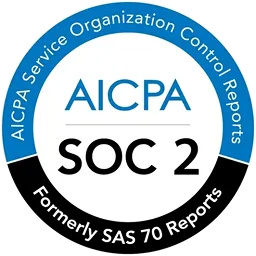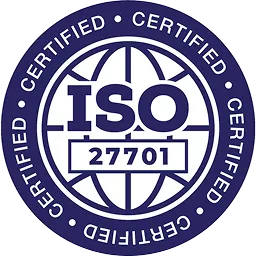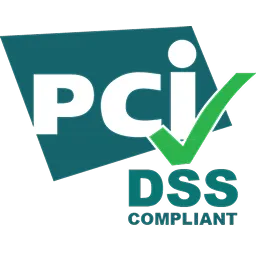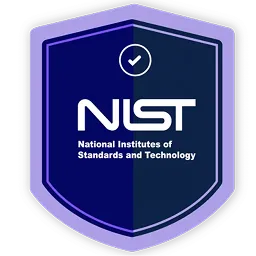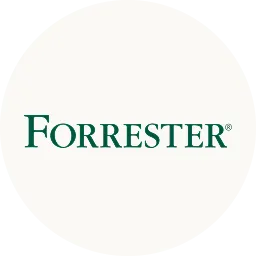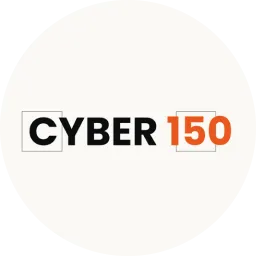Many organizations struggle with app access due to poor access control policies. To fix this, having a proper access control policy template is essential. This article guides you on how to create an effective template.
Without an access control policy template, your organization faces significant risks. For instance, a former employee still having access to critical systems and sensitive data. Without a clear policy to promptly revoke access, this ex-employee could cause harm, such as deleting files, leaking confidential information, or disrupting services.
These incidents can lead to financial loss, legal issues, and reputational damage. Implementing an access control policy template is not just a best practice; it's essential to protect your organization's assets and ensure long-term success.
But how do you go about getting this template in place? It starts with understanding the steps involved in creating one tailored to your organization's needs.
Let's delve into the key steps in creating an effective access control policy template.
Key Steps to Create an Access Control Policy Template
Let's explore the key steps for efficiently creating an access control policy template.
1. Defining the purpose of the access control policy
Defining the purpose of an access control policy is a foundational step in creating a robust template. As an IT manager, understanding this purpose is critical for ensuring the security and integrity of sensitive data and systems.
The purpose is to clearly outline the objectives and goals of controlling access to systems. This includes specifying who should have access to what information, when they should have access, and under what conditions access should be granted or restricted.
One key benefit of defining the purpose is that it provides a clear framework for decision-making. When you understand why certain access controls are necessary, you can make informed choices about what measures to implement and how stringent they need to be. This enhances security and streamlines the access management process, making it more efficient and effective.
2. Categorizing data for protection
As an IT manager, creating an access control policy template hinges greatly on this crucial step. It involves sorting through your organization's data and classifying it based on its sensitivity and importance. This can range from personal information of clients to trade secrets or financial records.
By categorizing data, you understand what you're dealing with and how to prioritize its protection. For instance, sensitive data like customer payment details or confidential business strategies requires stricter access controls compared to less critical information like general company announcements. This approach allows you to allocate resources wisely and tailor access policies accordingly.
Moreover, categorizing data facilitates the implementation of a more granular access control policy. You can fine-tune permissions based on the specific needs of different data categories. This enhances security and streamlines workflows by ensuring authorized personnel have timely access to the information they need to perform their tasks effectively.
3. Assigning access to individuals or groups
Assigning access to individuals or groups emerges as a pivotal step in creating an access control policy template. This process defines who can access specific resources, systems, or data within your network infrastructure. With this step, you establish a structured framework that governs how employees interact with sensitive information and critical systems.
Assigning access to individuals or groups brings several notable benefits to your organization. It enhances security by limiting access only to authorized personnel, reducing the risk of unauthorized breaches or data leaks. This targeted approach minimizes the potential for insider threats and ensures that sensitive information remains safeguarded.
Moreover, assigning access facilitates streamlined operations and fosters productivity within your workforce. By granting appropriate access levels to different teams or departments, you empower employees to perform their tasks efficiently without encountering unnecessary roadblocks. This tailored access approach promotes collaboration while maintaining data integrity and confidentiality.
4. Identify the roles of these individuals or groups
One fundamental step in creating this template is identifying the user roles, individuals, or groups within the organization. Once the individuals or groups are identified for assigning access, it's crucial to identify their roles. By clearly defining the roles, an access control policy can be tailored to grant appropriate levels of access to each user based on their responsibilities and requirements.
Let's consider that in an organization, there are typically distinct user roles, such as developers, testers, project managers, and administrators. Each role has unique responsibilities and requires access to specific resources.
- Developers need access to the source code repositories and development servers.
- Testers may require access to testing environments and bug-tracking systems.
- Project managers may need access to project management tools and client communication platforms.
- Administrators need access to critical infrastructure components for maintenance and troubleshooting.
An access control policy template can be structured by clearly identifying these roles to assign appropriate permissions and restrictions.
- For example, developers may have read and write access to code repositories but limited access to production servers to prevent unintended changes.
- Testers may have access to testing environments but are restricted from modifying production data.
- Project managers may have access to project management tools but limited access to sensitive client information.
- On the other hand, administrators may have elevated privileges to manage user accounts, configure security settings, and perform system updates.
This key step promotes a granular approach to access control. This ensures that users only have access to the required resources, reducing the risk of unauthorized access or data breaches. Further, it streamlines the access provisioning process. You can easily refer to predefined roles and permissions when onboarding new employees or updating access privileges for existing users.
5. Determining data sensitivity levels
Determining the sensitivity of your data and the level of protection it needs is crucial. By collaborating closely with application owners, you can establish a least privilege policy to assess and classify sensitive applications and resources based on your business requirements.
The sensitivity of your data greatly influences the formulation of access control policies. It dictates the approach administrators must take and the security measures required. For instance, safeguarding confidential or personal information demands high employee accountability.
However, if your company primarily stores data accessible to anyone on the network, the security needs may be less stringent. Throughout this guide, utilize the following questions to gauge your organization's sensitivity level:
- Is any sensitive information stored within your systems?
- What type of data is being stored?
- Who has access to this data?
- How frequently does the data change?
Answering these questions will help you tailor your security requirements to match the specific needs and sensitivity levels of your organization's data.
6. Ensuring regulatory and government access compliance
Maintaining regulatory and government access compliance is crucial for ensuring the security and integrity of your organization's data. Integrating the compliance measures into your access control policy template is a strategic move to safeguard your company's assets and reputation.
Ensuring regulatory standards and governmental requirements helps mitigate the risk of legal repercussions. Non-compliance can lead to hefty fines, penalties, and potential damage to your organization's credibility. By aligning your access control policies with these regulations, you create a solid framework for avoiding such pitfalls.
Moreover, embracing regulatory and government access compliance builds trust and transparency within your organization. It assures stakeholders, customers, and partners that their sensitive information is handled with extreme care and in compliance with established norms. This, in turn, enhances your company's reputation as a reliable custodian of data.
Further, this step clarifies who has access to what data and under what conditions, reducing the likelihood of unauthorized breaches or data misuse. Minimizing potential disruptions enhances your cybersecurity posture and operational efficiency.
Download our free access control policy template.
How Does Zluri Help you with Access Control?
Data breaches and unauthorized access are constant threats to organizations. Therefore, having a robust access control policy is paramount. This helps you define who can access what information within your systems, ensuring that sensitive data remains protected and only accessible to authorized users.
Enter Zluri, offering a comprehensive access management solution to help you implement and enforce your access control policies efficiently. With Zluri, you can seamlessly manage user access across various systems and applications. This ensures that the right individuals have access to the right resources at the right time.
Let's see how.
- Role-Based Access Control (RBAC): Zluri simplifies the implementation of RBAC by allowing your team to define roles and assign specific permissions to each role. This granular approach ensures that users only have access to the resources and functionalities necessary for their job responsibilities, reducing the risk of unauthorized access.
For example, you have different teams like Marketing, Sales, and Finance, each needing access to different sets of software tools. With Zluri, your IT admin can create distinct roles for employees within these departments, such as Sales Representative, Marketing Manager, or Financial Analyst.
Once these roles are defined, Zluri allows your team to assign permissions accordingly. For instance, a “Sales Representative” might need access to CRM software and sales analytics tools, while a “Financial Analyst” requires access to accounting software and financial databases. Zluri ensures that each employee only has access to the tools and data relevant to their job responsibilities. - Principle of Least Privilege (POLP): With Zluri, you can easily enforce the principle of least privilege by granting users the minimum level of access required to perform their tasks. Limiting unnecessary permissions can minimize the potential damage from a compromised account or insider threat.
For example, consider an accounting department where employees handle sensitive financial data. With Zluri, your admin can ensure junior accountants have access solely to the accounting software required for data entry and basic analysis. On the other hand, senior accountants gain additional access to financial reporting tools. This limits the exposure of critical financial information, safeguarding against unauthorized access and data breaches. - Just-in-Time Access: Zluri offers a self-serve solution that provides just-in-time access capability. This enables you to grant temporary access to users for a specific period. This dynamic approach allows you to balance security and productivity by providing access only when needed. Further, this reduces the risk of unauthorized access and ensures compliance with security policies.
For instance, an external consultant needs temporary access to a project management tool to review a client's project status. With Zluri, the project manager can issue temporary access credentials to the consultant for a predefined duration. Once the review is complete, access automatically expires, reducing the window of vulnerability and maintaining tight control over system access.
Further, to know more about Zluri, book a demo now.
FAQs
What is physical access control?
Physical access control keeps places safe, such as buildings, parking lots, or offices. It uses a system to monitor and ensure only the right people get in. This system prevents anyone who shouldn't be in certain areas from getting in.
What are the 4 types of access control?
4 types of access control include:
- Discretionary access control
- Role-based access control
- Attribute-based access control
- Policy-based access control
What is an access control process?
The access control process is how companies decide who can use their data and systems. Authentication is how they check if someone is who they say they are before letting them in.
What are access control privileges?
Roles are assigned privileges, and users are assigned roles. This structured approach ensures that users have clear permissions to interact with system objects. This defines their operational boundaries effectively.
What is an access request?
An access request is when someone officially asks to use certain resources or information. Authorized personnel review and approve the request to ensure optimized access control.







.png)

.svg)



